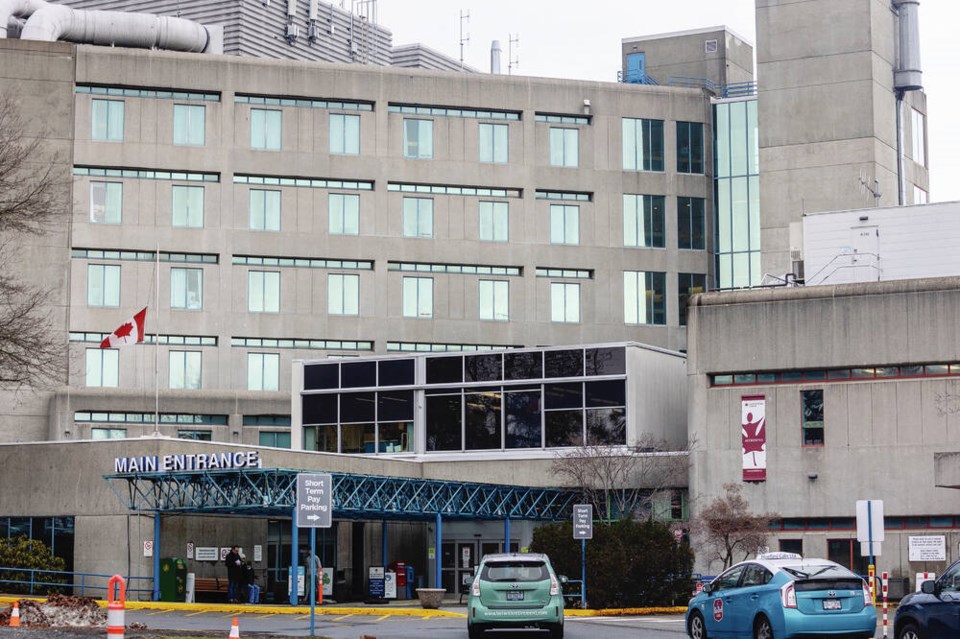Courtesy of the Times Colonist
Photo: Victoria General Hospital. Hospitals should be the place of last resort in a health-care system designed to keep people well, writes Trevor Hancock. DARREN STONE, TIMES COLONIST
Last week, I suggested we need to radically re-think Canada’s “health care system” – actually, 13 separate, mainly publicly funded, often privately operated non-systems for illness care, with federal cost-sharing.
Having worked as a family physician in primary care, as a public-health physician in health planning and as a medical health officer, as an advisor and consultant on health promotion to the World Health Organization — mainly in Europe — as a medical consultant in population and public health at B.C.’s Ministry of Health, and as a health futurist, I have had lots of time to observe and think about Canada’s “health care system.”
Back in the 1990s and into the 2000s, I sometimes led workshops on health-care reform which, over time, I came to call “Blow it up and start again!”
Now obviously we can’t blow up the system, so I did a thought experiment, inspired by Albert Einstein’s approach to physics: What if the health-care system disappeared overnight and we had to rebuild it from scratch? What would we build, knowing what we know today?
Well, we would not start with the hospital, which is what happened in Canada. If you look at the history of health care, the federal government first got involved by supporting the building of hospitals in the late 1940s, then supported public insurance for hospital care in the late 1950s, and then brought in public insurance for physician care outside hospitals in the late 1960s.
Unfortunately, we got it backwards. For the most part, ever since, we have been running around trying to plug holes in the system, without stepping back and seeing if perhaps we need an entirely different system.
What I propose instead is a true health system, one that is designed to first create good health. So the first thing to do is keep people healthy, because clearly, the best way to deal with an over-burdened illness care system is to stop over-burdening it.
The second important way to reduce the burden is to increase people’s capacity for appropriate self-care, so they don’t seek medical care when they don’t really need it.
We need to begin, then, with a clear vision of what a true health system would look like, including what an illness-care system within such a system would look like. Then, every decision we make should be one that takes us closer to that vision.
Thus, in my thought experiment, I turned the system on its head, making the hospital the place of last resort and beginning with what keeps people healthy.
After all, various estimates suggest that medical care is responsible for around 10-20 percent of avoidable premature mortality.
The other 80-90 per cent is attributable to human biology, personal behaviours, social and economic factors that shape our behaviours and our communities, and the quality of our built and natural environments. So that is where we need to start.
The model I created — first published in 1993 — is an upside-down triangle, with each layer in the model involving fewer people needing services. The better the layers higher up in the model do their work, the fewer people the lower levels need to care for.
Thus, the first couple of layers of the model, which affect the whole population, are about creating a “wellbeing society,” something the World Health Organization has been calling for recently.
Such a society puts the wellbeing of people and the planet at the centre of all decision-making, testing all policies, especially economic policy, against their ability to either improve or harm wellbeing.
It also ensures that people are protected from harmful activities by the private or public sectors.
Then come layers that are about people learning to look after themselves, both to keep healthy and to manage their minor ailments and injuries, activities the health system must support.
The first real contact with the health care system involves receiving preventive services and quality primary care, then — if needed — specialty ambulatory care and home care.
Only if all that is insufficient do people actually need to be admitted to a community facility or hospital.
In the next couple of columns, I will describe this in more detail.
thancock@uvic.ca
Dr. Trevor Hancock is a retired professor and senior scholar at the University of Victoria’s School of Public Health and Social Policy
